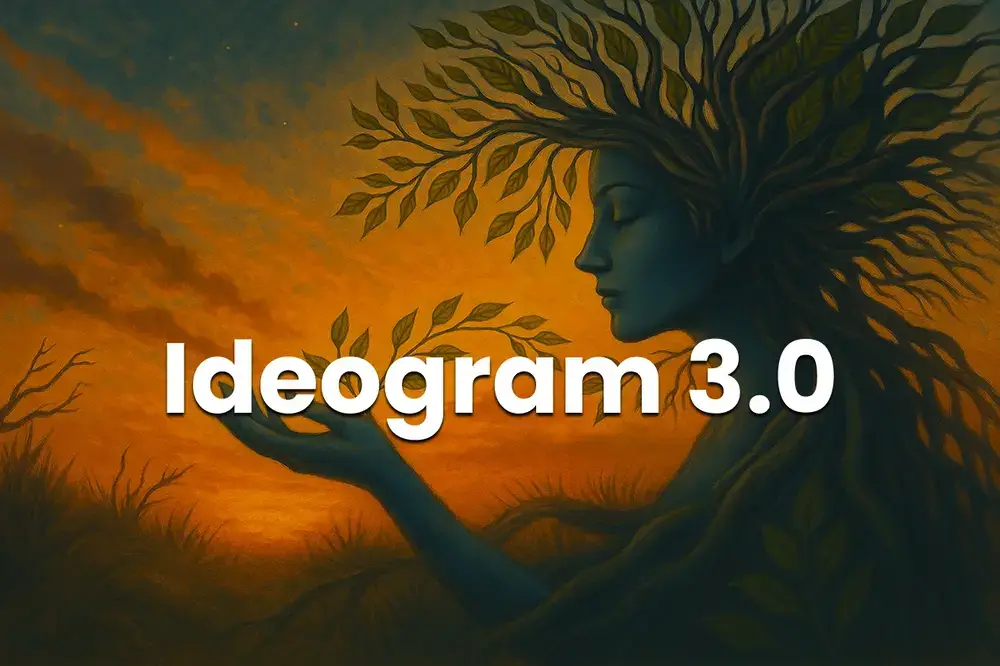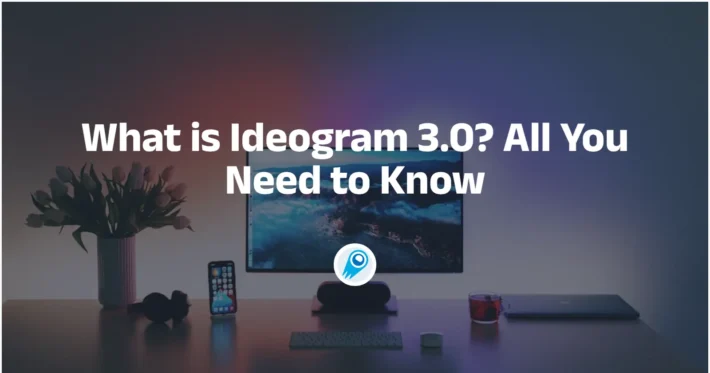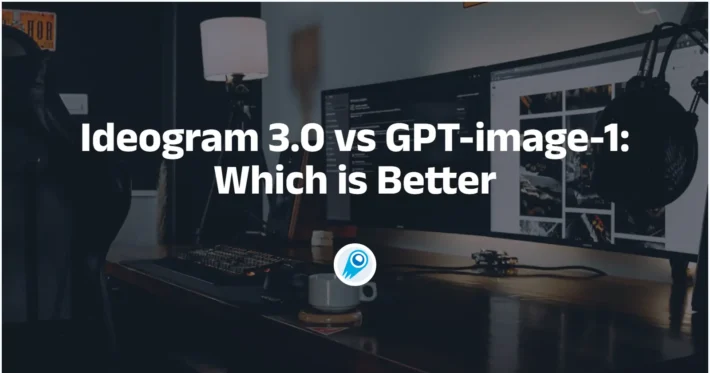A Guide to Using Ideogram 3.0: Detailed explanation of the latest features

Ideogram 3.0, launched on March 26, 2025, is the latest iteration of Ideogram’s text-to-image AI model, bringing breakthroughs in photorealism, text rendering, consistent style control, and interactive editing features that collectively advance the quality and creativity of AI-generated imagery . Its new Style Reference System and Prompt Magic tools allow creators to specify aesthetic guidelines efficiently, while Magic Fill and Extend provide a seamless canvas-based editing experience for real-time modifications . Available on both the web platform and iOS app, and complemented by dedicated API access, Ideogram 3.0 is designed to meet individual creators’ needs as well as enterprise-grade design, marketing, and content-production workflows.
What is Ideogram 3.0?
Ideogram 3.0 is the newest version of Ideogram’s generative text-to-image AI model, engineered to convert natural-language prompts into high-quality visuals with unprecedented fidelity ([Ideogram Blog][1]). It represents a significant evolution over prior releases—including Ideogram 2.0 and 2a—by improving alignment between user prompts and generated outputs, enhancing realism, and delivering richer creative controls. In third-party evaluations, professional designers have rated Ideogram 3.0 higher than leading competing models across a broad spectrum of styles, subjects, and compositional challenges .
How did Ideogram evolve from earlier versions?
Prior to 3.0, Ideogram’s 2.x series introduced foundational text-rendering and style-consistency features, yet users reported limitations in photorealism and texture fidelity ([laprompt Blog][6]). Version 3.0 addresses these gaps by integrating improved lighting algorithms, enhanced gradient smoothing, and more advanced environmental-detail rendering to bridge the gap between AI outputs and traditional photography .
What are the latest features in Ideogram 3.0 (As of May 3, 2025)?
Ideogram 3.0 introduces a suite of enhancements spanning image quality, creative controls, and editing workflows.
Photorealism and Visual Fidelity
Images generated by 3.0 exhibit more natural lighting, smoother gradients, and richer texture details, making portraits, product shots, and environments appear strikingly lifelike. In human evaluations, these improvements led to higher ELO scores compared to leading image-generation models, confirming significant gains in realism and consistency.
Enhanced Text Rendering
Unlike many text-to-image systems that struggle with legibility, Ideogram 3.0 delivers accurate, stylized text as native graphical elements. It can handle complex, multi-line compositions—such as posters or packaging designs—rendered with precise typography and layout control. This unlocks new use cases in advertising, branding, and editorial design where text integration is critical .
Style Reference System
One of 3.0’s flagship features, the Style Reference System lets users upload up to three images as visual guides, ensuring generated outputs follow desired aesthetics without verbose prompt engineering. Behind the scenes, these references tap into a library of over 4.3 billion style presets, enabling rapid exploration of unique artistic blends and consistent brand-aligned visuals .
Prompt Magic Enhancement
Prompt Magic automatically expands simple user inputs into rich, composition-aware descriptions, augmenting prompts with details on lighting, color palettes, and emotional tone ([Queen Caffeine][9]). This feature streamlines workflows for users less familiar with technical prompt syntax, yielding nuanced outputs that match professional design briefs.
New Editing Tools: Magic Fill and Extend
Ideogram Canvas now includes Magic Fill and Extend, two interactive editing tools that allow real-time adjustments within the generated image context. Magic Fill lets users replace or refine areas—such as swapping product labels or adjusting backgrounds—while Extend intelligently adds coherent scene expansions beyond original borders . These capabilities reduce dependency on external editors and accelerate iteration cycles .
API Access and Integration
For developers and enterprise teams, Ideogram 3.0 offers a dedicated API that exposes all core features—model inference, style references, prompt magic, and editing operations—enabling seamless integration into custom applications, design pipelines, and automated content-generation systems ([THE DECODER][5]). This programmatic access supports high-volume use cases and fosters ecosystem growth around Ideogram’s technology.
How do you access Ideogram 3.0?
Web Platform
The primary interface at ideogram.ai offers free, freemium, and enterprise tiers. Users can select model variants, access style references, and export high-resolution assets directly from the browser. No installation is required, and collaborative workspaces let teams share projects and prompts in real time.
Ideogram uses a credit-based Freemium model:
| Feature | Free Plan | Basic ($8/mo) | Plus ($20/mo) | Pro ($60/mo) |
|---|---|---|---|---|
| Priority Credits | 0 | 400 (~1,600 images) | 1,000 (~4,000 images) | 3,500 (~14,000 images) |
| Slow Credits | 10/week | 100/day | Unlimited | Unlimited |
| Canvas Uploads | ❌ No | ❌ No | ✅ Yes | ✅ Yes |
| Private Mode | ❌ No | ❌ No | ✅ Yes | ✅ Yes |
| Batch Processing | ❌ No | ❌ No | ❌ No | ✅ Yes |
| Upscaling | ❌ No | ✅ Yes | ✅ Yes | ✅ Yes |
iOS App
Available on the App Store, the Ideogram AI Image Generator app mirrors the web functionality with on-device caching and offline prompt drafting. It supports high-resolution downloads up to 4K, and integrates with Apple’s Shortcuts for streamlined mobile workflows.
API Access
Developers can call the Ideogram 3.0 API (via REST) to integrate image generation into websites, marketing automation, and custom applications. Three pricing tiers—Turbo ($0.04/image), Balanced ($0.07/image), and Quality ($0.10/image)—allow fine-grained control over cost versus fidelity . Authentication uses API keys, and endpoints support prompt text, optional image uploads for style references, and JSON-formatted generation parameters.
How do you generate images using Ideogram 3.0?
Choosing the Right Model Variant
- Turbo: For rapid prototyping and concept iteration at minimal cost; outputs in seconds with moderate detail.
- Balanced: A middle ground offering faster turnaround than Quality with improved image detail over Turbo.
- Quality: Prioritizes photorealism and text precision, ideal for final deliverables in print and high-end digital campaigns .
Crafting Effective Prompts
Best practices include:
- Clarity: Specify primary subject, environment, and style descriptors (“a minimalist poster featuring bold sans-serif text against a gradient background”).
- Hierarchy: Use prompt structure to differentiate between main elements and decorative details.
- Constraints: Define aspect ratios and layout instructions (e.g., “text centered at top, image occupying bottom two-thirds”) to ensure consistent results.
Using Style References
Upload one or more reference images to the Style References panel. Ideogram 3.0 analyzes color schemes, composition, and texture cues, then applies these attributes to the generated image. This feature is invaluable for maintaining brand consistency across campaigns without manual color correction .
What are the advanced features in Ideogram 3.0?
Batch Generation and Workflow Integration
Batch Generation, introduced in late 2024, lets users queue dozens or hundreds of prompts, automatically exporting assets in organized folders. Version 3.0 enhances this with per-item style chaining and conditional branching, allowing dynamic control over variant outputs within a single job .
Layout and Typography Controls
Beyond simple text placement, Ideogram 3.0 supports custom grid systems, margin padding, and text flow across arbitrarily shaped paths. Designers can upload SVG masks to dictate text or image boundaries, unlocking intricate editorial layouts directly from prompts .
Multilingual Text Support
The model natively handles non-Latin scripts—such as Chinese, Arabic, and Devanagari—while maintaining font integrity and readability. This expands the tool’s utility for global campaigns and localized content creation.
Custom Asset Uploads
Users can incorporate logos, icons, or 3D renders into their prompts. Ideogram 3.0 meshes these elements into the scene, respecting lighting and perspective cues, which is especially useful for product mockups and packaging previews.
How to optimize your workflow with Ideogram 3.0?
Templates and Presets
Prebuilt templates—for social media posts, print ads, and web banners—jumpstart projects. Users can save custom prompt–style pairs as personal presets, accelerating recurrent tasks and ensuring team-wide consistency.
Automating with the API
Set up CI/CD pipelines to auto-generate visual assets from content repositories or CMS entries. For example, an e-commerce site might automatically produce product thumbnails and promotional graphics whenever new items are added.
Collaborating and Sharing
Integrated sharing links enable stakeholders to comment on drafts without leaving the platform. Version 3.0’s permission controls let admins restrict editing rights, ensuring brand guidelines are upheld across distributed teams.
What are the best use cases for Ideogram 3.0?
Graphic Design and Advertising
Create high-impact posters, billboards, and print ads with complex typography and layered imagery, all within minutes—dramatically reducing traditional design cycle times.
Marketing Campaigns
Generate cohesive visual themes across email headers, social carousels, and display ads using shared style references, ensuring a unified brand voice that adapts quickly to market feedback.
Social Media Content
Rapidly produce platform-optimized graphics—Instagram stories, LinkedIn banners, TikTok backdrops—with on-brand typography and photorealistic elements that stand out in crowded feeds.
Educational and Research Applications
Visualize data concepts, scientific diagrams, and multilingual infographics with precise labeling and illustrative scenes, aiding comprehension and engagement in academic settings.
How Can Users Leverage Ideogram 3.0 for Their Projects?
Getting Started: From Account to First Image
- Sign Up / Log In: Create a free Ideogram account at ideogram.ai or via the iOS app—new users receive 100 free credits.
- Select Preset: Choose “hyperreal,” “design,” or any custom preset.
- Enter Prompt: Describe the scene, objects, style, and text.
- Generate & Refine: Click “Generate”—iterate with guided sliders for color, detail, and text clarity .
Crafting Effective Prompts
- Be Specific: “Golden hour forest path” vs. “forest.”
- Use Sub-Prompts: Separate key elements with “::” and allocate weights.
- Leverage Presets: Apply “noir cinematic” for moody lighting automatically.
- Post-Processing: Use built-in upscaler to amplify resolution or export SVG for vector overlays .
Advanced Tips and Tricks
- Image-to-Image Mode: Upload a rough sketch or photograph as a base—ideal for product mockups.
- Prompt Chaining: Generate storyboards by feeding previous outputs as new prompts with evolved instructions.
- Custom Style Training: For enterprises, upload branded assets to fine-tune the style encoder (via API) for on-brand visuals.
Integrating with Workflows
- Marketing Squads: Automate A/B tests by generating multiple ad creatives with slight prompt variations.
- Game Dev: Rapidly prototype environment art and character concepts.
- Publishing: Create custom illustrations and typographic layouts for e-books and blog posts.
Conclusion
Ideogram 3.0 stands at the forefront of text-to-image generation, marrying photorealism, precise typography, and versatile layout controls in a user-friendly package. Whether you’re a designer streamlining ad production, a marketer seeking rapid campaign visuals, or a developer integrating image synthesis into apps, Ideogram 3.0 provides the tools and flexibility to bring creative visions to life. By understanding its model variants, mastering prompt construction, and leveraging advanced features like batch generation and style references, professionals can unlock unprecedented efficiency and quality in visual content creation. For ongoing insights and tutorials, engage with the Ideogram community and official channels to stay ahead of emerging best practices and feature updates.
Getting Started
Developers can access Ideogram 2.0 API (model name: ideogram_generate_V_2; ideogram_edit_V_2; ideogram_remix_V_2😉 through CometAPI. To begin, explore the model’s capabilities in the Playground and consult the API guide for detailed instructions.
You can use Ideogram 2.0 API of cometAPI to edit, generate, and mix images. Ideogram 3.0 API will be launched soon.CometAPI provide you with the old version at a cheaper price .


